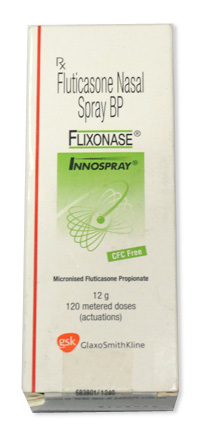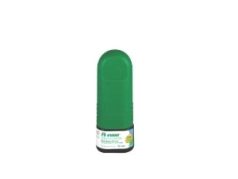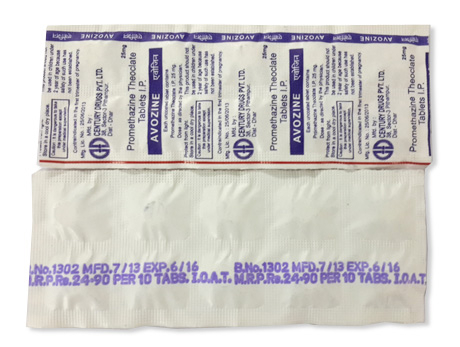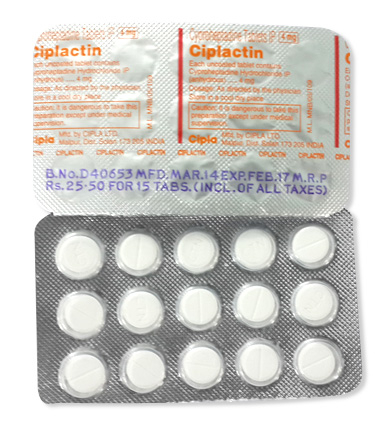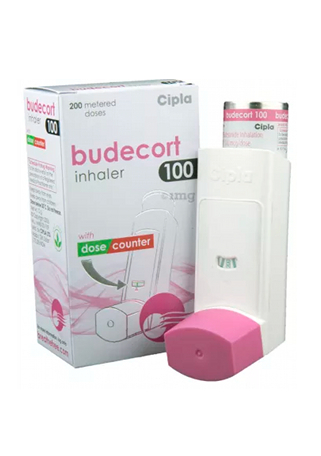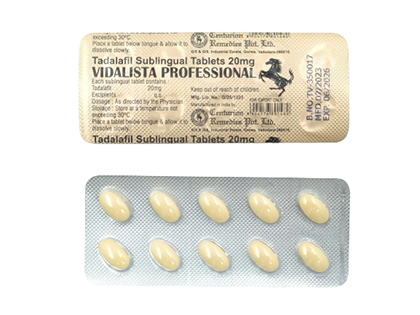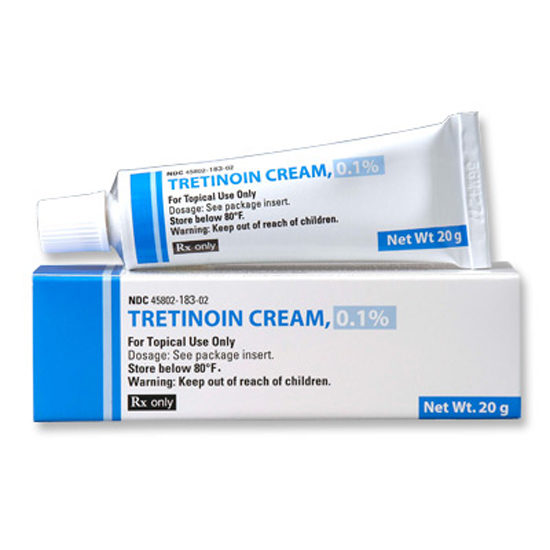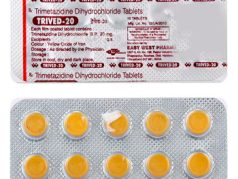Allegra

Allegra
- In our pharmacy, you can buy Allegra without a prescription, with delivery available across Canada. Discreet and anonymous packaging.
- Allegra is intended for the treatment of seasonal allergic rhinitis and chronic idiopathic urticaria. The drug is a histamine H1-receptor antagonist (non-sedating type).
- The usual dosage of Allegra is 60 mg twice daily or 120 mg to 180 mg once daily for adults and teens. For children aged 6–11 years, it is 30 mg twice daily.
- The form of administration is available as film-coated tablets, oral suspension, and oral disintegrating tablets.
- The effect of the medication begins within 1 hour.
- The duration of action is approximately 24 hours.
- Do not consume alcohol.
- The most common side effect is headache.
- Would you like to try Allegra without a prescription?
Basic Allegra Information
- International Nonproprietary Name (INN): Fexofenadine
- Brand Names Available in Canada: Allegra
- ATC Code: R06AX26
- Forms & Dosages: Tablets, oral disintegrating tablets, oral suspension
- Manufacturers in Canada: Sanofi-Aventis
- Registration Status in Canada: OTC
- OTC / Rx Classification: Over-the-counter
Availability & Price Landscape
The availability of Allegra (fexofenadine) across Canada makes it a go-to solution for managing allergy symptoms. Major pharmacy chains such as Shoppers Drug Mart, Rexall, and London Drugs play a crucial role in stocking this popular antihistamine.
Several formulations are available, including tablets, oral disintegrating tablets, and oral suspension, in multiple dosages. Availability can vary significantly based on provincial regulations and local stock levels. This means that while one region may have a robust supply of different Allegra formulations, others may face shortages or limited options.
Online Pharmacy Trends in Canada
In recent years, online pharmacies have surged in popularity among Canadian shoppers, presenting a convenient alternative for those looking to save time and money on their medication purchases. Many consumers appreciate the ease of ordering Allegra online, leading to a rise in the number of virtual pharmacies.
However, it is essential to note that provincial regulations govern online sales of prescription medications. This means that while some online pharmacies can ship Allegra nationwide, others may face restrictions in specific provinces. Shoppers should verify that the pharmacy is legitimate and fully licensed to ensure compliance with these regulations.
Price Ranges by Package Size
Pricing for Allegra can significantly vary depending on dosage and the pharmacy's location. For instance, a package of 30 mg tablets often falls between CAD $12 and $20. Various factors come into play, such as the type of pharmacy and any ongoing promotions they might have.
It's crucial to understand that provincial health coverage can also influence the cost. Patients should inquire about their insurance options, as this could lead to substantial savings on out-of-pocket expenses. Understanding these financial aspects can empower consumers and help them make informed decisions about their allergy treatment.
Indications in Local Canadian Medical Practice
Approved uses (Health Canada DIN context)
Health Canada has given the green light for Allegra, known generically as fexofenadine, to treat seasonal allergic rhinitis and chronic idiopathic urticaria. This means doctors can confidently prescribe Allegra for hay fever and hives, knowing these applications are backed by regulatory approval. The Drug Identification Number (DIN) system in Canada plays a crucial role here; it ensures that Allegra's approved uses are well-recognized in healthcare settings. This not only aids healthcare professionals in making informed choices but also offers patients reassurance that the medication is reputable and effective for their allergy symptoms.
Off-label patterns in Canadian healthcare
Despite its approved applications, some healthcare providers are venturing into off-label territory with Allegra. Conditions like eczema and other histamine-related issues have seen Allegra prescribed when patients report significant symptom relief. While this practice may offer comfort, it's essential for patients to engage in discussions with their healthcare providers before using Allegra off-label. Consultation ensures that patients understand the potential risks and benefits associated with using Allegra for alternative conditions.
How It Works in the Body
Layman’s explanation (Canadian patient-friendly tone)
Fexofenadine is the active ingredient in Allegra. This antihistamine works by blocking histamine receptors in the body, which helps prevent allergy symptoms like sneezing, itching, and a runny nose. Unlike older antihistamines, Allegra is designed to be non-drowsy. That means you can take it throughout the day without worrying about feeling sleepy, making it a great option for those who want allergy relief without the grogginess that comes with some medications.
Clinical detail from Health Canada resources
Clinical studies affirm Allegra's non-sedating properties, which makes it a reliable choice for those needing allergy assistance without the unwanted drowsiness often associated with older antihistamines. The Canadian pharmacological guidelines classify it as a histamine H1-receptor antagonist, confirming its place in managing allergic reactions effectively. For long-term allergy sufferers, Allegra provides a useful solution, allowing them to tackle symptoms without impacting their daily activities.
Dosage & Administration
Standard regimens per Canadian guidelines
According to the Canadian guidelines, adults are typically prescribed Allegra dosages of 60 mg taken twice daily or a single 120 mg dose for seasonal allergy relief. For children aged 6 to 11, the recommended dosage is usually 30 mg taken twice daily, available in oral suspension or oral disintegrating tablet (ODT) forms. These standard doses ensure effective symptom management while keeping patients safe and informed.
Adjustments by patient type (with Canadian clinical notes)
When it comes to dosage adjustments, certain patients might require special consideration. Those with severe kidney impairment should use the lowest effective dose to avoid elevated drug levels, as fexofenadine is primarily eliminated through the kidneys. Additionally, parents should consult healthcare professionals to determine the appropriate dosing for children under the age of 6, ensuring their safety and the efficacy of the treatment. Elderly patients generally do not require specific adjustments, but monitoring renal function is advised.
Contraindications & Side Effects
Common (Health Canada-approved list)
Generally, Allegra is well-tolerated among users. However, common side effects reported may include headaches, drowsiness (although less than with first-generation antihistamines), nausea, and fatigue. Most adverse reactions are mild and manageable, and they are often outweighed by the benefits of effective allergy relief.
Rare but serious (with Canadian pharmacovigilance data)
While rare occurrences, more severe side effects can emerge. These include allergic reactions, characterized by swelling, difficulty breathing, or cardiac arrhythmias. Data from Canadian pharmacovigilance indicates that such serious issues are infrequent. Nonetheless, immediate medical attention should be sought if any signs of a severe allergic reaction arise, ensuring users can navigate their allergy treatment safely.
Comparable Medicines in Canada
When seeking relief from allergies in Canada, many patients wonder about the alternatives to popular medications like Allegra (fexofenadine). Known for its effectiveness without causing drowsiness, Allegra has become a go-to option for treating symptoms of allergic rhinitis and chronic idiopathic urticaria. However, alternatives also exist that provide similar benefits.
Alternatives table (with DIN references)
| Medicine | INN | DIN |
|---|---|---|
| Allegra | Fexofenadine | [insert DIN] |
| Cetirizine | Cetirizine | [insert DIN] |
| Loratadine | Loratadine | [insert DIN] |
| Desloratadine | Desloratadine | [insert DIN] |
Pros and cons list
Pros:
- Non-sedating options available.
- Effective for treating various allergies.
- Widely accessible over-the-counter (OTC).
Cons:
- Possible side effects can occur.
- Not every alternative may suit all patients.
Current Research & Trends
The landscape for allergy treatment continues to evolve, particularly in the context of fexofenadine research. Significant investigations have been launched since 2022, delving into the long-term impacts and effectiveness of fexofenadine across various demographics. Researchers are exploring how new formulations could enhance compliance while reducing adverse effects, aligning with the broader shift towards personalized medicine.
Major Canadian or international studies 2022–2025
Recent studies highlight the expanding understanding of the medication's role in managing allergy symptoms, especially in diverse populations. The evolution of allergy treatments is pivotal for assuring that patients receive the most optimal care tailored to their needs.
Health policy implications
As research unfolds, implications for health policies surrounding allergy medications come to the forefront. Findings could reshape drug coverage rules under provincial health plans. Emphasising evidence-based analysis will be essential for developing future guidelines that further improve medication accessibility for Canadians.
Common Patient Questions in Canada
In Canada, patients often have questions about their allergy medications, particularly dosage recommendations, potential interactions with other drugs, and the medicine's safety during pregnancy. Addressing these inquiries is vital for ensuring patients feel informed and comfortable with their treatment options. Consulting healthcare professionals or reliable health information resources can provide clarity and reassurance.
Regulatory Status
Fexofenadine's pathway to approval by Health Canada involved stringent clinical evaluations. This process is crucial to affirm that the medication meets safety and efficacy standards before being designated as OTC, ensuring public health is prioritized.
Health Canada approval process
The process for obtaining Health Canada approval necessitates comprehensive studies demonstrating a drug's safety, efficacy, and manufacturing quality. Allegra's transition is a testament to rigorous regulations that ultimately protect patient health.
DIN number relevance
The Drug Identification Number (DIN) serves a critical function in marking medications within Canada's health system. It allows healthcare providers to efficiently access key data regarding each drug, including its approved uses, safety measures, and effectiveness.
Visual Recommendations
Creating engaging and informative visual aids can significantly enhance patient understanding of allergy treatments. Infographics tailored for the Canadian context could focus on dosage guidelines, patient satisfaction metrics, and comparisons with other allergy medications. These tools help demystify fexofenadine's mechanism of action, aiding in informed discussions between patients and healthcare providers.
Infographic ideas for Canadian context
Developing infographics that outline dosing schedules, patient testimonials, and side effect comparisons can effectively engage consumers in their healthcare decisions. By visualizing this information, patients are more likely to remember key points relating to their allergy management.
Charts to aid in decision-making
Utilizing comparison charts that summarize side effects and patient-reported outcomes can empower consumers when exploring allergy treatment options. This clarity drives better decision-making related to medications like Allegra and its alternatives.
Delivery Information
| City | Region | Delivery time |
|---|---|---|
| Toronto | Ontario | 5–7 days |
| Vancouver | British Columbia | 5–7 days |
| Montreal | Quebec | 5–7 days |
| Calgary | Alberta | 5–7 days |
| Ottawa | Ontario | 5–7 days |
| Edmonton | Alberta | 5–7 days |
| Winnipeg | Manitoba | 5–7 days |
| Halifax | Nova Scotia | 5–9 days |
| Victoria | British Columbia | 5–9 days |
| Quebec City | Quebec | 5–9 days |
| Fredericton | New Brunswick | 5–9 days |
| Saskatoon | Saskatchewan | 5–9 days |
| Charlottetown | P.E.I. | 5–9 days |

